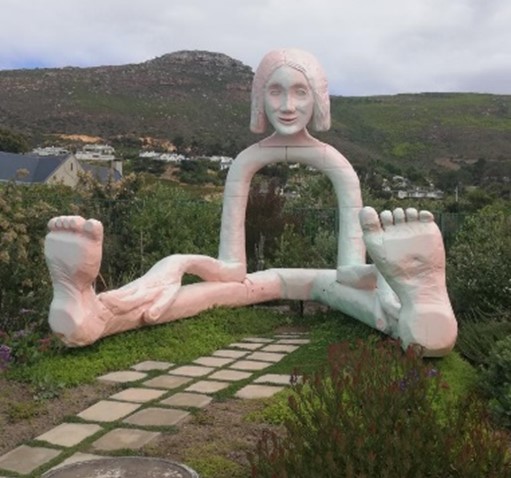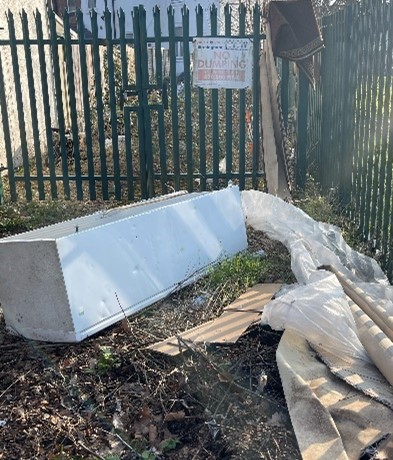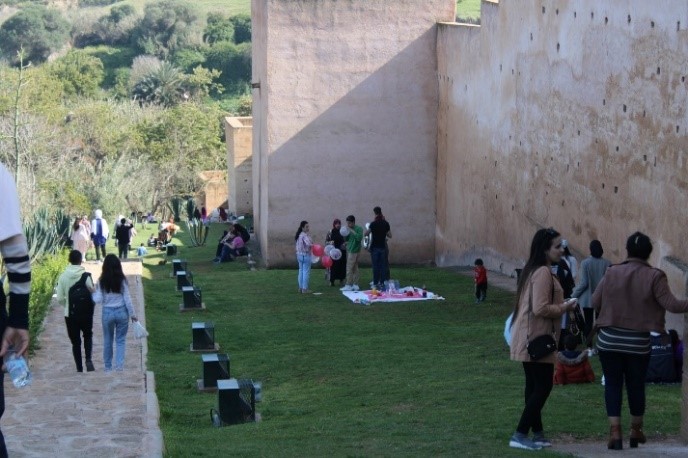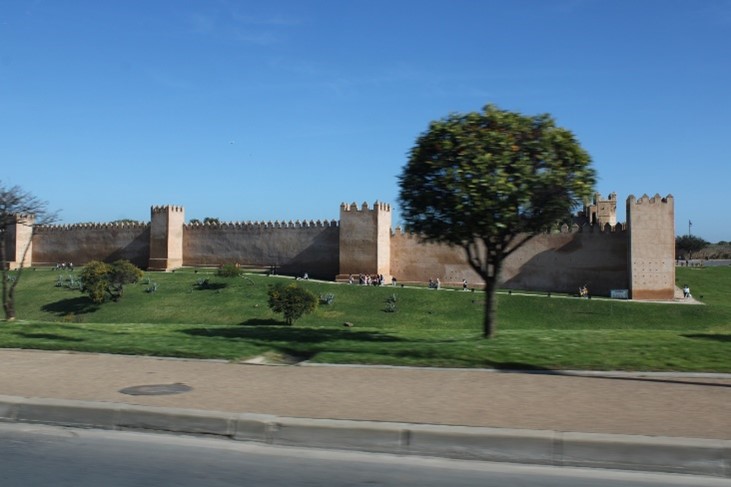Ilias Defaa (University Mohammed V of Rabat), Lauren Richards (University of the Western Cape), Nana Amponsah (University of Birmingham), Rebekah Roebuck (University of Birmingham), Saina Kiprotich (University of Nairobi)
In a world where life is increasingly busy and fast-paced, the value of open spaces to our well-being is gaining attention. But what are open spaces? Why do we use them? What impacts our choice of open space? How do we access them and what barriers prevent that? Do we use them alone, or can they be centres of community? What benefits do they have to our well-being? We explore these questions using a variety of experiences collected from four cities: Birmingham (UK), Cape Town (South Africa), Rabat (Morocco) & Nairobi (Kenya) to illustrate the multifaceted responses. We invite you to explore the narrative, to consider each question and the variety of responses. What we provide here is just a small exploration of the connection between people and open spaces.

Rabat: View from Chellah, where school children are visiting
Cape Town: The False Bay Coastline
Nairobi: The paved paths make mobility easier i.e., no mud during the rainy season
Birmingham: A particularly snowy day at a local train station. Trains still arrived.
It is a Tuesday morning when we wake up. In Rabat, Cape Town and Nairobi, the sun is shining. In Birmingham, it’s snowing. The weather can be a barrier to accessing open spaces, but can also be a motivator, geographical context and other individual factors might impact that. As climate change impacts our environments, different decisions will need to be made about weather. Some of us rush outside at the first glimpse of sunshine, some of us can’t imagine a walk in the rain. However today, snow or sunshine, we want to go out today and explore our open spaces. What does open spaces mean to you? We may think of open spaces as green spaces, or wild spaces, or less obvious fun and quirky spaces. Some are developed by people or left to exist as wilderness.

They may be recreational facilities, public parks, heritage sites such as museums, beaches and even malls. They are spaces in society that are enriching for the soul and bring about peace and tranquillity. Why do we need and want open spaces? To maintain our mental health, walk our dog, walk ourselves, move, feel free, educate ourselves on art and history, see wildlife and so much more. The value of open spaces is hard to quantify, and we often don’t fully appreciate the value until we cannot access them.

Selecting which open space to use depends on the choices available to you. In both Birmingham and Cape Town, while there are many open spaces, the standard of facilities such as community parks vary from suburb to suburb, with more affluent neighbourhoods often having better maintained green space. Some of these spaces are treasured, but some become left behind, neglected, or subject to fly tipping or dumping, causing visual pollution, and spoiling open spaces. Safety also shapes decisions. In Cape Town and Birmingham, some people, especially women often do not feel comfortable accessing open spaces alone at night, due to crime; either experienced or perceived. Lights could offer some solution, however, offer a conflict against wildlife which need the dark to thrive, and also the desire for wild spaces with minimal human interference. Safety also comes up in Nairobi; concerns around being mugged lead to certain open spaces being preferred over others.
Likewise, affordability rubberstamps one’s ability to access open spaces. Some open spaces will be free for all to use, while some may have a cost, either for the entire site or for part of the space. The public green space of Chellah just outside the Almohad walls in Rabat is free, which means that individuals from all socioeconomic backgrounds can access and enjoy the benefits of the green space motivated to escape the hustle and bustle of city life.
In Nairobi, we found that students preferred free or cheaply affordable spaces for discussion groups or team-building exercises. This impacted their choices; Uhuru Park has free access, and the Arboretum is relatively cheaper hence attracting a good number of individuals more so on public holidays and weekends. We often have to manage conflicts here; free open spaces may increase availability to more people; however these spaces may often cost to run, and therefore questions of funding can arise. Community groups, such as in Birmingham often provide support voluntarily alongside accessing grants to improve and develop the space for use.


How do we access our chosen open space? Accessibility and mobility also act as deciding factors in our choice of open spaces. This is in terms of proximity; availability of transport means and the nature of the paths leading to these open spaces. The presence of transport options for example bicycles, buses and even walking contributes to the accessibility of these green spaces. In Birmingham, there are over 600 parks and other open spaces, and many can be accessed on just foot alone. This helps, as convenience is often a key motivating factor in choosing to visit a space.
In Nairobi, there is much preference for those with walking paths and designated parking slots. Cycling paths however need to be installed along the paths leading to these spaces as many cyclists compete for the same paths with the motorists. This shows a common conflict that arises around access. Cycle lanes may also not be accommodating to adaptive cycles for disabled people, or for parents who may cycle with their children.
Sometimes the open spaces we want to use aren’t the nearest. We might want to use public transport to access our open spaces. Cape Town has a very efficient and affordable public transportation system. These include buses, trains and local taxis which drive all routes and will ensure that you arrive at your destination. This is a story reflected in Rabat as well with multiple transportation options, including taxis, cars, bicycles, buses, and pedestrian walkways, ensures that individuals can reach the green space regardless of their preferred mode of transportation. However for disabled people, these public transport options are not always as accessible; either not wheelchair friendly in Cape Town, or in Birmingham less spontaneous; train support must be booked, buses may not accommodate more than one wheelchair user.

Walking may allow us to connect with open spaces, however not all public spaces themselves are equally accessible. Stairs, uneven flooring, overgrown streets, too much space given to cars; all of these can cause conflicts between moving around our environments and individuals. The choice of how to get there also impacts where we are able to go.

Once we are there, how do we access and use the space itself? Chellah in Rabat has great historical importance, allowing visitors to explore their cultural roots and heritage while enjoying the natural landscape. The park encompasses ancient structures dating back to both the Roman and Islamic epochs, offering visitors the opportunity to appreciate nature and learn about their history simultaneously. As Chellah is listed and protected by the Moroccan authorities, it is well maintained so visitors can feel safe and secure while enjoying the natural beauty and historical significance of the area.
The cleanliness and maintenance of the green space in Rabat are also noteworthy. The absence of trash, mosquitoes, and pests ensures that visitors can enjoy a pleasant and relaxing experience. The green space is well-maintained, with regular upkeep and maintenance to ensure that it remains a beautiful and enjoyable destination for visitors. This allows it to be used by a great variety of people.
Sometimes, communities are crucial to the success of open spaces. In Birmingham, Cotteridge Park holds a ‘Green Flag’ award and is a prime example of access and mobility being at the heart of a space. It has a car park, a fully accessible path all the way around, and a splendid Eco Hub providing a place to rest, to meet, or to explore. This has all been achieved by the ‘Friends of Cotteridge Park’. In Birmingham, community groups are crucial to access to open spaces, supported by Birmingham Open Spaces Forum, under the purview of the passionate and energising Sarah, who coordinates and supports the 130+ ‘Friends of’ and other community groups that caretake and protect not only those spaces that seem traditional to open spaces; parks, fields and gardens, but also litter pick in the streets, and maintain other smaller patches of ‘green’, which some may overlook, but are of equal importance. Where there is less formal maintenance on offer, it is often left to who have a desire to preserve and evolve these spaces. In Cape Town too, maintenance often requires effort from both the local council and community members to ensure that public green spaces are safe, clean, and inviting.

Open spaces have a wide-ranging importance to those who use them; helping us to strengthen connections to the environment, our history or simply ourselves. Accessibility, well-being, and affordability are all key factors that contribute to the popularity of open spaces. Although this blog provides just a snapshot of experiences, we found that many of the barriers and motivations were similar regardless of culture, geography, or language. In order for the needs of groups and individuals to be met, they had to be recognised, whether that was through transport provision, wheelchair-accessible routes, or free entry. Conflicts will always arise in access to spaces, and to some extent, all we can do is accommodate them but be aware of who often ‘loses out’, and those who are less visible in the spaces. We hope you reflect on your own relationship with open spaces.

The calabashes are traditionally used to store sour milk also known as Mursik among the Kalenjin Community.
About the authors
Ilias Defaa is a PhD student in Archeology and History at the University Mohammed V of Rabat, Morocco
Lauren Richards is a Master’s student in Sociology at the University of the Western Cape, South Africa
Nana Amponsah is a Master’s student in Health, Safety and Environment Management at the University of Birmingham, UK
Rebekah Roebuck is a Master’s student in Environment, Development and Politics at the University of Birmingham, UK
Saina Kiprotich is a Master’s student in Development Studies at the University of Nairobi, Kenya

Join the discussion
0 people are already talking about this, why not let us know what you think?